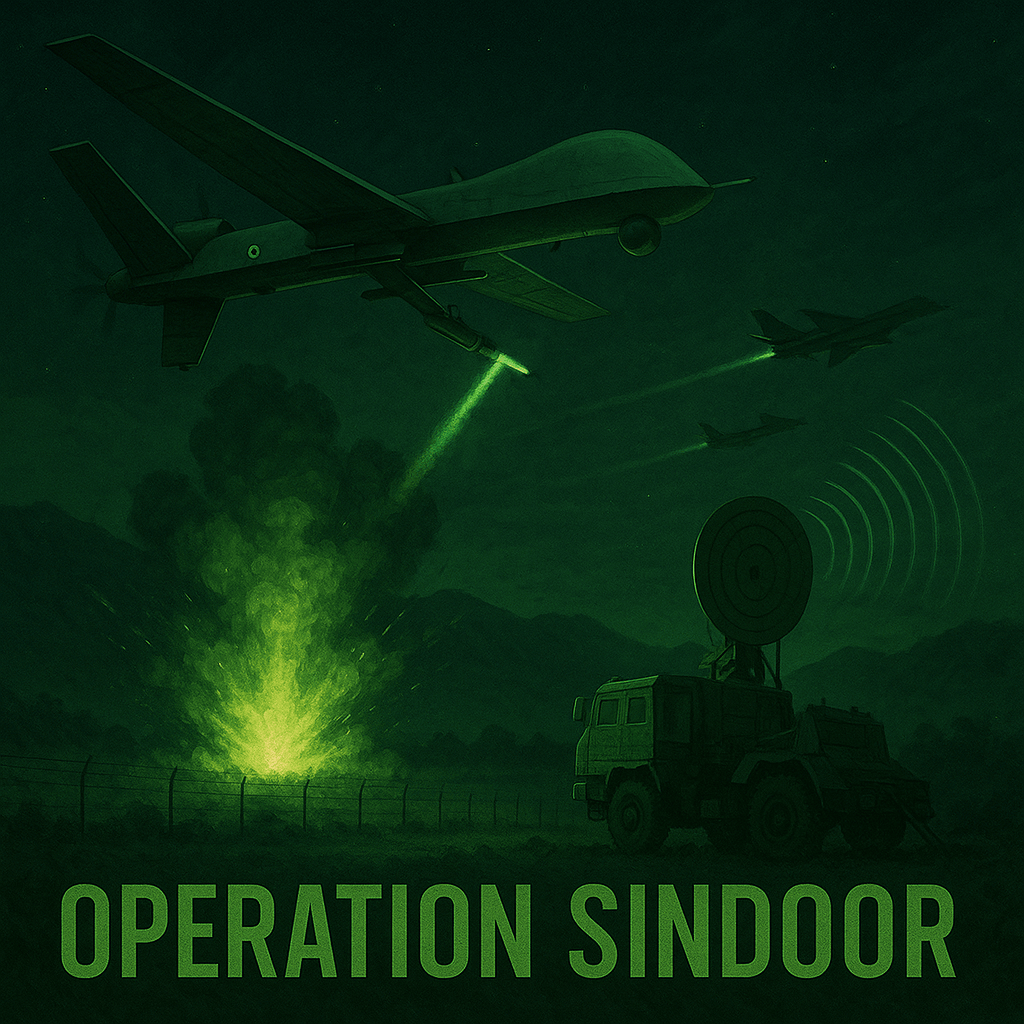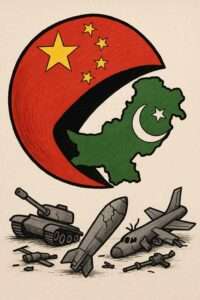India’s precision airstrikes on May 7, 2025, under Operation Sindoor, marked a decisive moment in South Asian strategic signalling. The strikes, aimed at eliminating active terror infrastructure in Pakistan-occupied territories, were executed flawlessly. Once again, Pakistan’s Chinese-supplied air defence systems—LY-80 (HQ-16), HQ-9, and radar arrays failed to detect, track, or respond. This is not just an operational lapse; it is a repeat exposure of a systemic weakness embedded deep within Pakistan’s over-reliance on Chinese military hardware.  This pattern of failure has precedent. During the Balakot airstrikes in 2019, Indian Mirage jets entered deep into Pakistani airspace, neutralised targets, and exited without interception. In 2016, India’s surgical strikes across the Line of Control post-Uri attacks achieved full tactical surprise. Even earlier, the 2011 Abbottabad raid by U.S. Navy SEALs highlighted how unprepared Pakistan’s air surveillance network truly was. Each of these incidents paints a consistent picture: Chinese equipment looks impressive in parade columns but collapses under combat stress.
This pattern of failure has precedent. During the Balakot airstrikes in 2019, Indian Mirage jets entered deep into Pakistani airspace, neutralised targets, and exited without interception. In 2016, India’s surgical strikes across the Line of Control post-Uri attacks achieved full tactical surprise. Even earlier, the 2011 Abbottabad raid by U.S. Navy SEALs highlighted how unprepared Pakistan’s air surveillance network truly was. Each of these incidents paints a consistent picture: Chinese equipment looks impressive in parade columns but collapses under combat stress.
Today, Pakistan’s defence architecture is almost entirely reliant on Chinese systems. This includes the JF-17 Thunder, plagued by engine fatigue and electronic reliability issues; LY-80 and HQ-9B air defence systems, which have failed under real-world engagements; and F-22P frigates, whose onboard sonar and endurance are widely reported as sub-optimal. These are not isolated technical setbacks. This is indicative of export-grade military technology sold under strategic packaging but operationally inferior, especially when compared to Russian, Western, or indigenous alternatives.
The failure of these systems raises a crucial question:  Is China swallowing Pakistan by it downgraded military tech? With Pakistan’s economy in crisis and its strategic autonomy eroding, China holds overwhelming leverage through CPEC the flagship project of Beijing’s Belt and Road Initiative. By embedding China deeper into Pakistan’s critical infrastructure, economy, and now security architecture, the stage is being set for soft military penetration under the pretext of “security support.” In effect, Beijing may be preparing to step in militarily to “protect its investments,” undermining Pakistan’s sovereignty in the process.
Is China swallowing Pakistan by it downgraded military tech? With Pakistan’s economy in crisis and its strategic autonomy eroding, China holds overwhelming leverage through CPEC the flagship project of Beijing’s Belt and Road Initiative. By embedding China deeper into Pakistan’s critical infrastructure, economy, and now security architecture, the stage is being set for soft military penetration under the pretext of “security support.” In effect, Beijing may be preparing to step in militarily to “protect its investments,” undermining Pakistan’s sovereignty in the process.
The strategic consequences are severe. For Pakistan, the illusion of strategic depth has now turned into a geopolitical trap. Instead of building independent deterrence, it has mortgaged national defence to a power whose incentives are increasingly extractive. For countries like Nigeria, Myanmar, Algeria, and others evaluating Chinese military exports, Pakistan is now a cautionary tale—not a case study of success.
INDIA seek peace, but will respond decisively when provoked. Our growth trajectory is rooted in stability, economic expansion, and technological innovation. But peace must be mutual but not a tactical pause for rearming terror groups under nuclear cover. The region cannot rise if one nation insists on bleeding itself and others to serve a bankrupt ideology.
It’s time Pakistan opened its eyes. Time to disengage from low-intensity conflicts, stop supporting extremist infrastructure, and cut the cord with a partner that hides its control behind the mask of friendship. South Asia has the potential to emerge as a global economic and strategic powerhouse but only if conflict gives way to cooperation, and geopolitical autonomy replaces dependence.
If Pakistan continues to import failed weapons and export instability, it will not just lose regional respect—it may lose control over its own region. Peace is not India’s weakness; it is our chosen path. But peace cannot survive unilateral deception. The world is watching. And history is unforgiving to those who outsource both their sovereignty and their soul.

